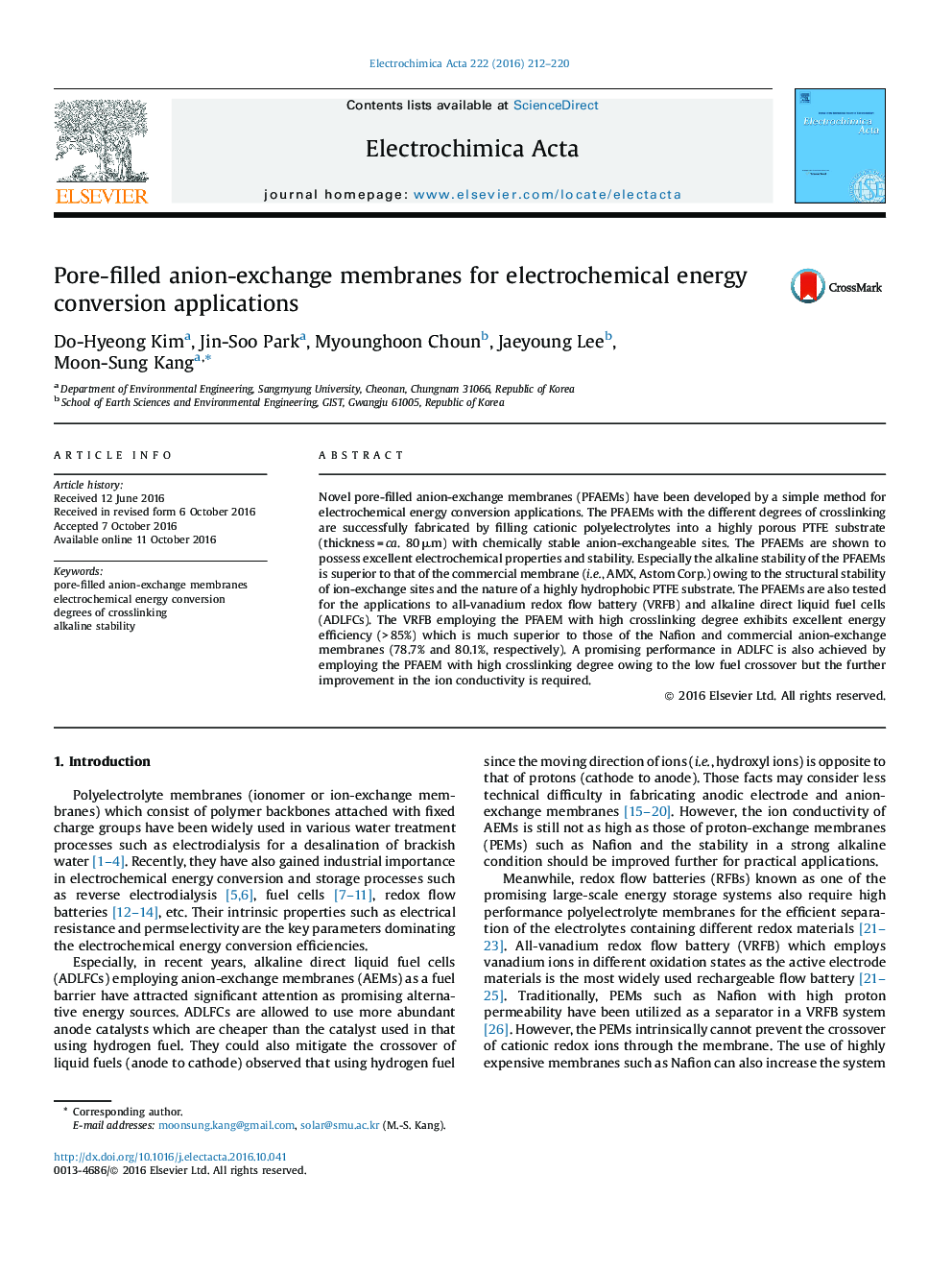| Article ID | Journal | Published Year | Pages | File Type |
|---|---|---|---|---|
| 6472535 | Electrochimica Acta | 2016 | 9 Pages |
â¢Pore-filled membranes are used for energy conversion applications using liquid fuels.â¢The degree of crosslinking mainly controls membrane performance parameters.â¢Alkali stability of pore-filled membranes is checked in 1 M KOH at 60 °C for 500 h.â¢Promising membrane properties are proven through various electrochemical analyses.
Novel pore-filled anion-exchange membranes (PFAEMs) have been developed by a simple method for electrochemical energy conversion applications. The PFAEMs with the different degrees of crosslinking are successfully fabricated by filling cationic polyelectrolytes into a highly porous PTFE substrate (thickness = ca. 80 μm) with chemically stable anion-exchangeable sites. The PFAEMs are shown to possess excellent electrochemical properties and stability. Especially the alkaline stability of the PFAEMs is superior to that of the commercial membrane (i.e., AMX, Astom Corp.) owing to the structural stability of ion-exchange sites and the nature of a highly hydrophobic PTFE substrate. The PFAEMs are also tested for the applications to all-vanadium redox flow battery (VRFB) and alkaline direct liquid fuel cells (ADLFCs). The VRFB employing the PFAEM with high crosslinking degree exhibits excellent energy efficiency (> 85%) which is much superior to those of the Nafion and commercial anion-exchange membranes (78.7% and 80.1%, respectively). A promising performance in ADLFC is also achieved by employing the PFAEM with high crosslinking degree owing to the low fuel crossover but the further improvement in the ion conductivity is required.
